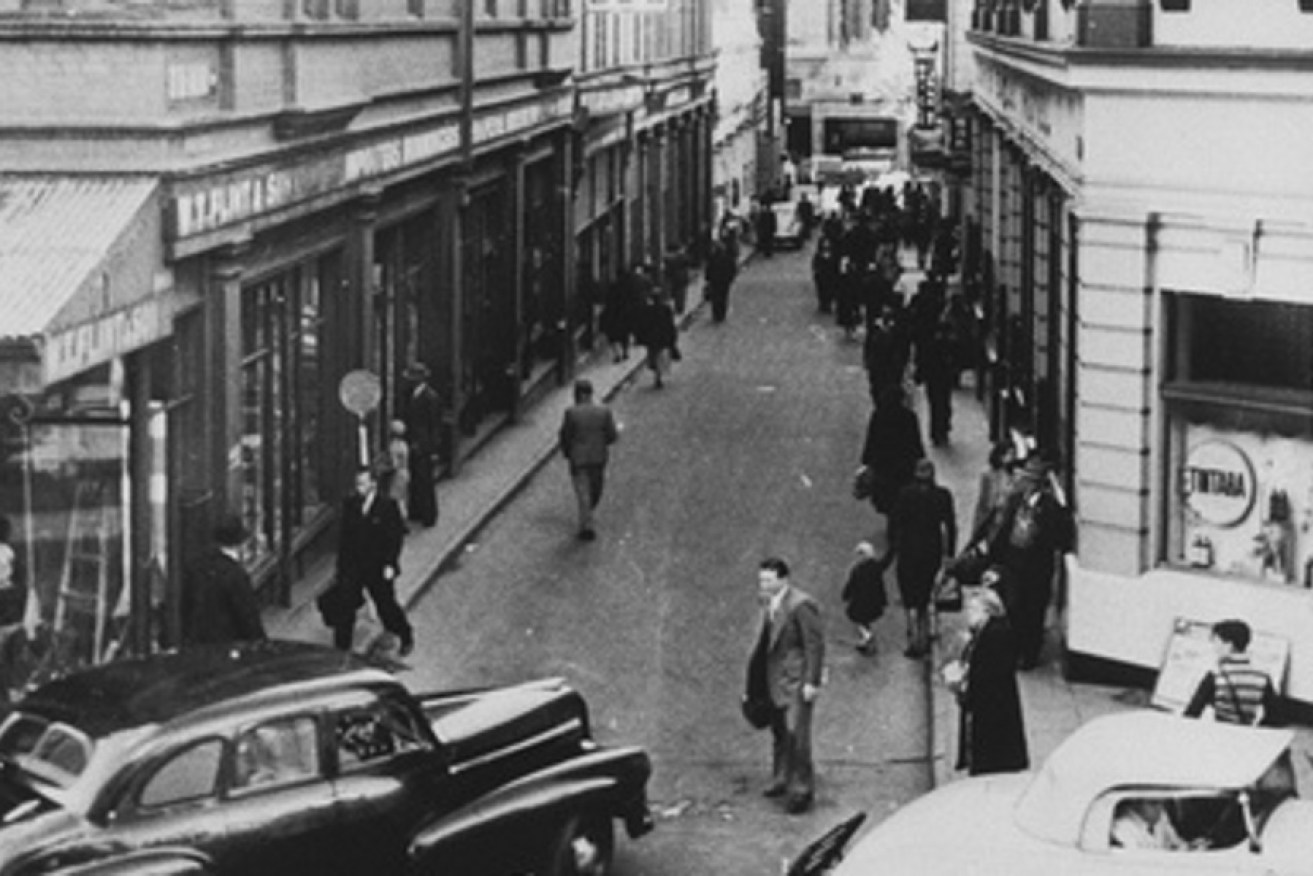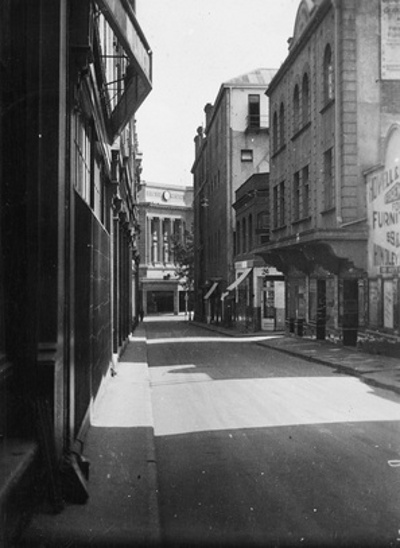Lessons in vibrancy from 1940s Bank Street

We need to learn from what was, and do better than we are with what could be. Mid-century Bank Street. Photo: Adelaide City Council Archives.
The health and wellbeing of Adelaide is increasingly being tested by the ‘vibrancy’ agenda for its streets and laneways.
The idea that streets need to instantly ‘mean’ something as opposed to expressing an ingrained character is becoming fashionable again, and the risk is that we ignore some of the fundamentals – the things that people notice but can’t quite put their finger on.
Until fairly recently in Adelaide, our smaller streets and laneways have been eschewed in favour of consolidated, big box developments which have often simply swallowed (often whole!) their local context, almost always erasing the very elements they seek to recreate.
In some circles this is called ‘progress’.
Adelaide is moving in the right direction on vibrancy, but we cannot stop at the short term activation projects – some economically justified investment in the public domain is required for the long term success of our city streets.
This reflects a recent rediscovery of the importance of the street to a city as an economic driver, as well as recognising the ‘grit and grain’, or its character.
Bank Street is a good example.
Bank Street is part of network of streets and laneways that fed what was a natural riverbank separated by a train station and city baths.
We need to decide if Bank Street is focused on a character: full of people and life, or one of the status quo: deliveries, through traffic, access and maintenance. Is it activated by quick wins, or equally longer-term investment?
Today, it’s part of the new conga line of emergent bars, trailing from Grenfell Street through Peel and Leigh Streets to the Riverbank.
It has a comforting feel, a street with a distinct purpose to service the train station and connect the bustling Hindley Street – or allowing the ribald patrons of Hindley Street safe passage back to their transport home…
In 2012 the modern equivalent of a ‘lighter, quicker, cheaper’ activation realised some changes in Bank Street.
But to truly energise Bank Street we need to shape and texture it with a nod to the past, as well as an eye to the future.
Over 70 years ago, the Corporation of the City of Adelaide upgraded Bank Street by widening it.
In 1945, then Acting City Engineer and Surveyor J Chapman wrote that “it would be reasonable to assume that after the War the intensity of traffic (pedestrian and motor car) in this street will continue to increase”.
Chapman reported that 48 per cent of traffic on Bank Street was bicycles, 31 per cent motor cars, 14 per cent motor lorries, 4 per cent horse-drawn vehicles and 3 per cent motorcycles.
And there was congestion – of a different kind.
On its busiest day there would be 21,000 people using the street on a Saturday morning – four times the current foot traffic on Leigh Street (5055, Gehl Architects study, 2011).
The maximum number of vehicles on any given day in 1937 was 868, on a Friday. Over a week, over 100,000 people used Bank Street, in a city with a (then) total population of around 380,000.
Chapman noted that “it is unlikely that the Railway Station, which has recently been rebuilt, will be moved to any other position within the next century and it therefore probable that pedestrian traffic in Bank Street is likely to increase…
“…there is a definite danger to pedestrians in peak periods, owing to the fact that they are forced to use the roadway due to the lack of footpath accommodation.”
He proposed restricting Bank Street to pedestrian traffic only or widening the street to include more room for vehicles.
The resolution involved what we see today – a one-way street widened to accommodate people and vehicles.
This was in a time when the privilege of private vehicle ownership was yet to blossom, before we developed our Australian love affair with the expanding suburbs, before Elizabeth was our new Crown, before we discovered cheap petrol and even cheaper cars.
It was a time of gloves and hats, of suits, and of (mostly) polite streets for polite people. It was a time before the car ate our cities…our streets were for people and it was a genuine observation, not a policy or a strategy of 21st century government authorities.
Remarkably, the buildings of Bank Street were built almost to the kerb lines, with windows and activation on both sides, selling a wide variety of good and services.
It was about how our streets were used – for commerce, daily business, shopping, transport, employment, living and recreation.
We need to learn from what was, and do better than we are with what could be.
To borrow from Elizabeth Farrelly, true urban design “sees public space as figure, not ground; it makes street-to-street connections feel like adventure, not duty; it gives out invitation to explore”.
– Daniel Bennett is Adelaide City Council’s City Design and Transport Program Manager, a registered landscape architect and Vice President of the Australian Institute of Landscape Architects.





